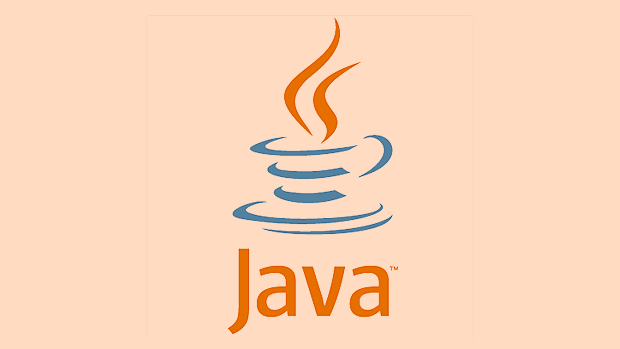Advanced Java Network Security Protocols
Jul 25, 2025 am 02:51 AMAdvanced Java developers should master the use and optimization of network security protocols such as TLS, SSL, HTTPS, etc. to improve system security. 1. Deeply understand the application of TLS/SSL in Java, and use SSLEngine, SSLContext, KeyManager and TrustManager to configure the protocol version and keystore. 2. When configuring HTTPS secure connection, you should specify SSLContext and verify HostnameVerifier to avoid trusting all certificates. 3. To defend against man-in-the-middle attacks, you should enable certificate verification, disable unsafe configurations, and update the truststore regularly. 4. Use SSLSocket and SSLServerSocket to implement TCP layer secure communication, and two-way authentication can be achieved through needClientAuth. Properly configuring Java security API is the key to avoiding security vulnerabilities.

Java network security protocol is the basis for building secure communications. Especially in enterprise-level applications, ensuring the security of data transmission on the network is crucial. For advanced Java developers, mastering the usage and optimization methods of related protocols such as TLS, SSL, HTTPS, etc. is the key to improving system security.

1. Deeply understand the application of TLS/SSL in Java
TLS (Transport Layer Security Protocol) and its predecessor SSL (Secure Sockets Layer) are currently the most mainstream encryption communication protocols. Java provides a complete SSL/TLS implementation, which is mainly supported through javax.net.ssl package.
- SSLEngine : used for encrypted communication in non-blocking I/O (such as NIO), suitable for frameworks such as Netty, Grizzly, etc.
- SSLContext : is the core class of the SSL/TLS protocol, used to configure keys, truststores, protocol versions, etc.
- KeyManager and TrustManager : Certificates used to manage local keys and trusts, respectively.
Recommendation: When using SSLContext, try to avoid using the default implementation. You should clearly specify the protocol version (such as TLSv1.2 or TLSv1.3) according to your business needs, and load your own KeyStore and TrustStore.

2. Configure the secure connection between HTTPS client and server
Java provides a variety of ways to implement HTTPS requests, such as HttpURLConnection , Apache HttpClient, OkHttp, etc. Regardless of the method used, HTTPS secure connection configuration is inseparable from SSLContext and HostnameVerifier.
SSLContext sslContext = SSLContext.getInstance("TLS");
sslContext.init(keyManagers, trustManagers, null);
HttpsURLConnection.setDefaultSSLSocketFactory(sslContext.getSocketFactory());
HttpsURLConnection.setDefaultHostnameVerifier((hostname, session) -> true); // Note that the production environment should be strictly verified- HostnameVerifier : used to verify whether the domain name in the server certificate matches. The development stage can be skipped, but the production environment must enable strict verification.
- X.509 Certificate Management : It is recommended to import the server certificate into TrustStore to avoid the problem of certificate distrust every time you connect.
3. Defense against common cyber attacks: man-in-the-middle attacks and certificate forgery
When Java applications handle HTTPS requests, if configured improperly, they can easily become targets of man-in-the-middle attacks (MITMs). Here are a few key defenses:

- Use HTTPS instead of HTTP to avoid transferring data in plain text.
- Do not disable HostnameVerifier or TrustManager, which will directly lead to successful MITM attacks.
- For self-signed certificates, they should be imported into the truststore manually, rather than selecting the "Trust all certificates" method.
- Regularly update the root certificate in the truststore to avoid using expired or revoked certificates.
Tip: You can use the
keytooltool to view, import, and delete certificates in Java's trust library (cacerts).
4. Use Java Secure Sockets to implement secure communication
In addition to HTTP, Java also supports secure communication at the TCP layer through SSLSocket and SSLServerSocket . Suitable for RPC, remote calls, message queues and other scenarios.
- The client uses
SSLSocketFactoryto create a connection. - The server uses
SSLServerSocketFactoryto listen for requests. - Two-way authentication (Mutual TLS) can be implemented by configuring
needClientAuthto enhance authentication.
The basic process is as follows:
- Initialize SSLContext.
- Create an SSLSocket or SSLServerSocket.
- After handshake, encrypted communication can be performed through the input and output stream.
Mastering Java network security protocols is not limited to theory, but also how to properly configure and use them in actual projects. Many security vulnerabilities are not problems with the protocol itself, but are caused by improper configuration or misunderstanding. Understanding the SSL/TLS handshake process, certificate verification mechanism, and the API provided by Java is the key to building highly secure Java applications.
Basically that's it.
The above is the detailed content of Advanced Java Network Security Protocols. For more information, please follow other related articles on the PHP Chinese website!

Hot AI Tools

Undress AI Tool
Undress images for free

Undresser.AI Undress
AI-powered app for creating realistic nude photos

AI Clothes Remover
Online AI tool for removing clothes from photos.

Clothoff.io
AI clothes remover

Video Face Swap
Swap faces in any video effortlessly with our completely free AI face swap tool!

Hot Article

Hot Tools

Notepad++7.3.1
Easy-to-use and free code editor

SublimeText3 Chinese version
Chinese version, very easy to use

Zend Studio 13.0.1
Powerful PHP integrated development environment

Dreamweaver CS6
Visual web development tools

SublimeText3 Mac version
God-level code editing software (SublimeText3)
 VSCode settings.json location
Aug 01, 2025 am 06:12 AM
VSCode settings.json location
Aug 01, 2025 am 06:12 AM
The settings.json file is located in the user-level or workspace-level path and is used to customize VSCode settings. 1. User-level path: Windows is C:\Users\\AppData\Roaming\Code\User\settings.json, macOS is /Users//Library/ApplicationSupport/Code/User/settings.json, Linux is /home//.config/Code/User/settings.json; 2. Workspace-level path: .vscode/settings in the project root directory
 How to handle transactions in Java with JDBC?
Aug 02, 2025 pm 12:29 PM
How to handle transactions in Java with JDBC?
Aug 02, 2025 pm 12:29 PM
To correctly handle JDBC transactions, you must first turn off the automatic commit mode, then perform multiple operations, and finally commit or rollback according to the results; 1. Call conn.setAutoCommit(false) to start the transaction; 2. Execute multiple SQL operations, such as INSERT and UPDATE; 3. Call conn.commit() if all operations are successful, and call conn.rollback() if an exception occurs to ensure data consistency; at the same time, try-with-resources should be used to manage resources, properly handle exceptions and close connections to avoid connection leakage; in addition, it is recommended to use connection pools and set save points to achieve partial rollback, and keep transactions as short as possible to improve performance.
 Mastering Dependency Injection in Java with Spring and Guice
Aug 01, 2025 am 05:53 AM
Mastering Dependency Injection in Java with Spring and Guice
Aug 01, 2025 am 05:53 AM
DependencyInjection(DI)isadesignpatternwhereobjectsreceivedependenciesexternally,promotingloosecouplingandeasiertestingthroughconstructor,setter,orfieldinjection.2.SpringFrameworkusesannotationslike@Component,@Service,and@AutowiredwithJava-basedconfi
 python itertools combinations example
Jul 31, 2025 am 09:53 AM
python itertools combinations example
Jul 31, 2025 am 09:53 AM
itertools.combinations is used to generate all non-repetitive combinations (order irrelevant) that selects a specified number of elements from the iterable object. Its usage includes: 1. Select 2 element combinations from the list, such as ('A','B'), ('A','C'), etc., to avoid repeated order; 2. Take 3 character combinations of strings, such as "abc" and "abd", which are suitable for subsequence generation; 3. Find the combinations where the sum of two numbers is equal to the target value, such as 1 5=6, simplify the double loop logic; the difference between combinations and arrangement lies in whether the order is important, combinations regard AB and BA as the same, while permutations are regarded as different;
 Troubleshooting Common Java `OutOfMemoryError` Scenarios
Jul 31, 2025 am 09:07 AM
Troubleshooting Common Java `OutOfMemoryError` Scenarios
Jul 31, 2025 am 09:07 AM
java.lang.OutOfMemoryError: Javaheapspace indicates insufficient heap memory, and needs to check the processing of large objects, memory leaks and heap settings, and locate and optimize the code through the heap dump analysis tool; 2. Metaspace errors are common in dynamic class generation or hot deployment due to excessive class metadata, and MaxMetaspaceSize should be restricted and class loading should be optimized; 3. Unabletocreatenewnativethread due to exhausting system thread resources, it is necessary to check the number of threads, use thread pools, and adjust the stack size; 4. GCoverheadlimitexceeded means that GC is frequent but has less recycling, and GC logs should be analyzed and optimized.
 python pytest fixture example
Jul 31, 2025 am 09:35 AM
python pytest fixture example
Jul 31, 2025 am 09:35 AM
fixture is a function used to provide preset environment or data for tests. 1. Use the @pytest.fixture decorator to define fixture; 2. Inject fixture in parameter form in the test function; 3. Execute setup before yield, and then teardown; 4. Control scope through scope parameters, such as function, module, etc.; 5. Place the shared fixture in conftest.py to achieve cross-file sharing, thereby improving the maintainability and reusability of tests.
 Understanding the Java Virtual Machine (JVM) Internals
Aug 01, 2025 am 06:31 AM
Understanding the Java Virtual Machine (JVM) Internals
Aug 01, 2025 am 06:31 AM
TheJVMenablesJava’s"writeonce,runanywhere"capabilitybyexecutingbytecodethroughfourmaincomponents:1.TheClassLoaderSubsystemloads,links,andinitializes.classfilesusingbootstrap,extension,andapplicationclassloaders,ensuringsecureandlazyclassloa
 How to work with Calendar in Java?
Aug 02, 2025 am 02:38 AM
How to work with Calendar in Java?
Aug 02, 2025 am 02:38 AM
Use classes in the java.time package to replace the old Date and Calendar classes; 2. Get the current date and time through LocalDate, LocalDateTime and LocalTime; 3. Create a specific date and time using the of() method; 4. Use the plus/minus method to immutably increase and decrease the time; 5. Use ZonedDateTime and ZoneId to process the time zone; 6. Format and parse date strings through DateTimeFormatter; 7. Use Instant to be compatible with the old date types when necessary; date processing in modern Java should give priority to using java.timeAPI, which provides clear, immutable and linear







